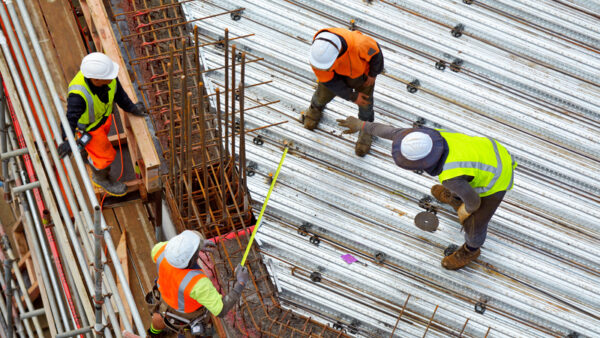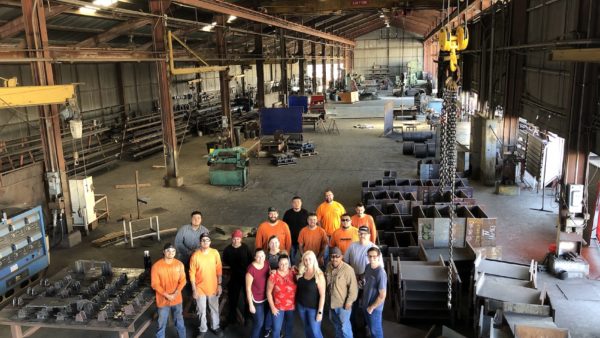Tony Wardle FCIOB is a veteran resident engineer and project manager on African port projects. Over the past 10 years, he has brought into his projects advanced quality assurance and safety procedures developed by the offshore oil and gas industry after the Piper Alpha disaster. Here, he describes their application in a project in Africa.
For years I’ve managed major port projects in the offshore oil and gas sector, which has given me the chance to compare approaches to quality and safety taken by the offshore and civil engineering industries, respectively.
They differ considerably. Sadly, it took the loss of 167 lives to do it, but the Piper Alpha disaster in 1988 sparked a significant change in the offshore industry’s approach, pushing it decisively from a reactive to a proactive one. Civil engineering should follow its example.
Over the last decade I have integrated offshore philosophies into my African port projects to improve quality management and safety, and I’ll describe the resulting systems as they were applied on a four-year project to reconstruct a major port in Africa.
The article has two parts. The first describes the quality assurance procedures we implemented to make sure the materials and components we used, such as piling and concrete, matched necessary standards and were installed correctly. The second describes the site safety approach, which helped us execute the project with no major accidents.
Setting the scene in terms of personnel, we employed two quality assurance-quality control (QA/QC) inspectors, one each for civil and mechanical engineering since we had both shop and field welding and instrumentation to inspect. The contractor had a QA/QC manager as well as a testing team and, being a remote site, their own laboratory for testing. We had one HSE inspector who worked with the contractor’s HSE team, allowing us to pursue a common goal. Â
Material integrity
At the heart of our approach to quality is a Quality Management System (QMS) that gives traceability to all the components used in the port’s construction.
Because these are EPC contracts, contractors must include their Inspection and Test Plans (ITPs) in their tender submissions.
We then produce a system of data packs, one for materials and components, and the other for their installation.
Scrutinising the material
The material data packs cover the product from manufacture to delivery on site. Some of these are quite simple. For example, piling from Arcelor Mittal was factory produced, shop welded and coated.
We require information on the chemical and mechanical properties of the steel used in the pile manufacture, welding procedures, welder qualifications and non-destructive test (NDT) results to check compliance with the relevant BS EN standards. The same applied to the pile coating’s manufacture and testing. Once delivered, any transportation damage was assessed and flagged for repair.
The concrete produced locally required more extensive information. As aggregates, cement and water were all locally sourced, regular testing was required as per BS EN standards. Third party testing was also required for calibration certificates on the batching plant and contractor’s laboratory equipment.
Checking installation
The installation data packs are just as rigorous. They require data on pile storage and handling, drive records, driving equipment used, all survey data, field welding procedures, welder qualifications, NDT results, coating repairs if required, and final inspection of the installed pile and interlocks.
The contractor also undertook welding of structural steel components and we required their welding procedures, welder qualifications and NDT procedures to be reviewed and accepted before the sign off of the data pack. The underwater welding of the cathodic protection also went through the same checks as the welding.
On task completion, material and installation data packs are signed off both by the contractors’ and the client’s QA/QC managers.
The above checks provide physical traceability from manufacture to completion, conforming with the relevant international standards as laid out in the design specification, and achieving complete contractual compliance of the project.
Getting the data in
We developed a standard system with templates and tracking sheets, giving easy access to relevant documents. Because the document control system is the central repository of this information, it must be accessible and easy to use for it to work as a track and trace system for the whole project.
All parties must also submit their data, so we require contractors to submit all relevant QA/QC documentation as part of their monthly valuation packages. In other words, all data packs relevant to work completed had to be signed off before contractors get their invoice approved and paid.
In this way, accurate “As Built” documentation accumulates throughout the project and remains accessible despite personnel changes or other issues. This has given us complete traceability on supply and installation from procurement to hand over.
Now for safety
Everyone in the workforce contributes to our safety culture. For example, all employees and contractors have both the right and the responsibility to exercise Stop-Work Authority. They can stop any operation without any repercussions if they believe people or the environment are in danger.
Employees and visitors must attend an induction course prior to entering the works zone. Full PPE is mandatory at all times. We use a Permit to Work system for each area that would require a risk assessment for each task.
Job Safety Analysis is required to look at hazard, cause and consequence and to ensure safeguards are in place. Jobs are graded as low, medium or high risk. Start-work checks must be performed by a supervisor and workers where a greater risk is perceived: for example, in confined space entrances, hot works, diving or demolition. Â
Not an afterthought
We start each day with a toolbox talk for the whole workforce: client’s team, contractor and subcontractors. It includes the work order of the day and a talk on a safety topic related to the work order by the relevant teams. An example would be one of the dive team talking about his safety set-up before entering the water, or a crane operator describing his approach to a blind lift.
This can be done in smaller groups if necessary, but it is important for all to be involved and to contribute so that safety is experienced as fundamental to the task, not an afterthought, a box to tick, or the problem of the HSE team. After all, it is in everyone’s interest to go home safely at the end of the working day.
Scaffold and formwork access points are clearly marked with plastic ID tags – red for unsafe and green for safe – that also contain loading and safety information. All drivers and operators are tested daily for alcohol and we do random testing of the general workforce.
For complex tasks involving heightened risks, such as where hot works are required near tanker hydrocarbon offloading, we organise a hazard and operability study (HAZOP) meeting to identify the risks and the steps needed to mitigate them.
We require an emergency and hazard response plan so it is clear to everyone what the procedure is in case of an incident. We hold drills every month with a different scenario to test the effectiveness of communications between departments and snag issues before they reveal themselves in an emergency. This also helps the onsite medical team understand how to prepare.
We’re all human
Developing these systems over the last 10 years has ushered in big improvements in safety and quality on complicated and sensitive projects.
Our latest ran for four years and involved demolishing three docks, both subsea and topside, building three new docks offshore, installing 1,200 piles as well as concrete platforms and an in-situ concrete quay wall, 26 fenders, 12 surfer landings and six utility stations. The port remained operational 24/7. In that time we recorded just two minor accidents.
We’re all human and we all make mistakes, which is why we need robust systems so our projects run smoothly and safely. They are constantly being reassessed, adapted and improved to help us deliver the quality and safety clients rightly expect.
Image by Jan-Rune Smenes Reite/Pexels
- Are you a CIOB member working on an interesting project in the Americas, Africa, Middle East, Asia or Continental Europe? Drop the Editor a line at: [email protected]










